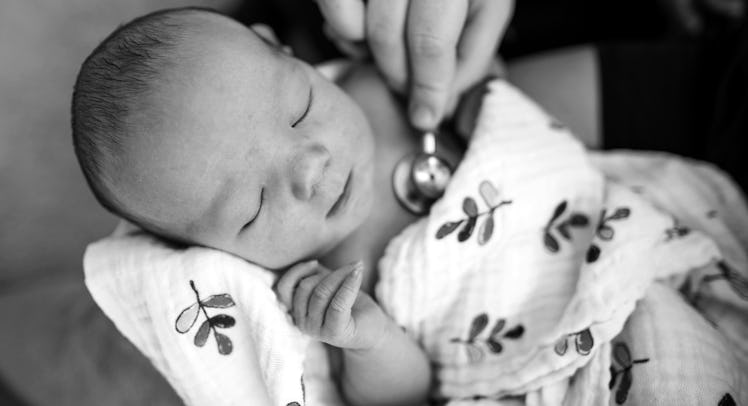9 Big Things Parents Of Infants Should Actually Worry About
Pay attention to the infant mortality to worry about the things that are worth worrying about — and treat the rest as the noise that it is.

The first year for a new family is a time for nesting and peace and figuring out this new life together. It’s also a time to deal with wild new fears. Infants are fragile and they can’t protect themselves and who the hell is prepared with that kind of responsibility? The delicacy of an infant, if not readily apparent, will become so once parents pack all 5 to 10 pounds of their tiny baby into a seemingly large car seat in a comically big car and drive off with what will seem like wild abandon. The good news: Very few babies (0.00236% of all babies, in fact) die in car accidents each year. The bad news? The infant mortality rate in the U.S. is otherwise pretty damn high, and American babies are 76 percent more likely to die before they turn a year old than babies in similarly developed countries, according to a study published in the journal Health Affairs. Parents have every right to be concerned. But considering there are so many worries out there, what are the big concerns on which parents of infants should actually spend their time and energy? Here are nine big issues that should be top of mind.
Stillbirth
The most common way for a baby to die is for it to do so before it’s even born. One in 100 births are stillborn in the U.S. That means that some 24,000 babies are stillborn every year, equal to the number of children that die in their first year. There is little a parent can do here but to know that they are not alone.
Pre-Term Delivery and Low Birth Weight
Some 11,000 infant deaths occur related to issues during pregnancy (that’s about half of all infant deaths). The biggest factors in these deaths are pre-term delivery and low birth weight. Again, there is little a parent can do in these instances.
Birth Defects
4,580 infant deaths are related to congenital chromosomal birth defects like anencephaly (failure of a significant portion of the brain to form) or spina bifida. Unlike stillbirth or low birth weight, a parent can easily know well in advance their child’s risk from a birth defect, but like all of the top things that kill an infant, there is little they can do to prepare.
Sudden Unexpected Infant Deaths
This is an umbrella diagnosis for deaths that occur for no discernible reason, usually while a child is sleeping. SUID deaths include SIDS, an unexpected, but diagnosable death in an otherwise healthy baby under 1-year-old, as well as deaths from unknown causes, and accidental strangulation or suffocation in bed. According to the latest data, in 2017 a total of 1,329 babies died of unknown causes, 1,363 died from SIDS, and 949 died from strangulation in bed. These three things account for more than 16 percent of all infant deaths in the U.S. It has been shown that keeping bumpers and blankets out of the crib, swaddling, and laying the baby on their back can lower the risk of these deaths.
Suffocation
The rate of death drops precipitously from 3-months out. Then, the leading cause of death, until the age of one, is suffocation, with 1,100 infant deaths a year. As in SUIDs, there are obvious steps parents can take to lower these rates — namely, keeping cribs clear and babies on their back.
Homicide
The second biggest cause of death from 3 months to 1 year is homicide. There were 302 infant homicides in the U.S. in 2017, but these deaths are not random acts of violence. 70 percent of these homicides were committed by a family member.
The Flu
Some 172 children died from complications related to the flu in the last season (this number includes all pediatric deaths, so infants would be a significantly lower number). While taking care to wash hands and limiting visits to newborns are effective, there is one very clear way for parents to avoid this: Get the flu shot. This goes for kids and adults.
Car Accident
There were just 91 babies under 1-year-old killed in traffic accidents in 2017. This number goes up as a child grows, which may be a testament to how much safer a rear-facing car seat is for children. That’s why the American Academy of Pediatrics suggests parents keep kids rear-facing for as long as they fit — which may well be until the end of their toddler rears.
Hot Cars
In 2018, hot cars killed 53 kids. Why? Because a car in the sun can heat 20 F in 10 minutes and heat stroke occurs shortly thereafter. Never leave a child unattended and if you drive a lot with the kids, think about getting a car seat alarm, which will gently (but persistently) remind you that your child is in their car seat.
Drowning
There were some 43 infant deaths by drowning in 2017, with 29 of those occurring while a baby was in the bathtub. Parents should never leave an infant unattended in a bath (an infant can drown in less than 20 seconds).